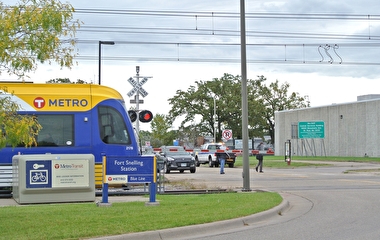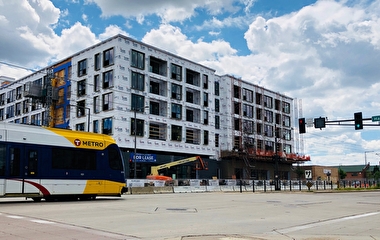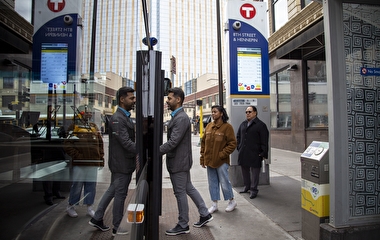These days, it seems everything is monitored. There are sensors to measure, track, and report calories consumed, steps taken, noise levels, traffic speed, travel costs, and much more. As people continue to become more interested in tracking their daily behaviors—through smartphone apps, for example—the resulting data could help transportation agencies gain insight on how people and vehicles move across networks.
“The rise of what we call the Quantified Self Movement will enable advanced traffic, air quality, and security monitoring systems, among other uses,” says Yingling Fan, an associate professor in the Humphrey School of Public Affairs. “We need to develop a better understanding of how agencies could exploit the data and how personal self-monitoring technologies will interact with the technologies that monitor the overall transportation network.”
In a report sponsored by the Minnesota Department of Transportation (MnDOT) and the Minnesota Local Road Research Board, Fan examines the current state of smartphone-based mobility sensing and measuring apps and discusses how these apps can be used to improve our transportation systems and deliver personalized travel behavior interventions in the future.
“Research shows that generic mass media campaigns can raise awareness of the benefits surrounding sustainable transportation, but the ability of generic information to bring about sustained behavioral change is questionable,” Fan says. “Many of these mobility-sensing apps could actually be designed as smartphone-based behavior intervention tools for promoting travel mode shifts. For example, after detecting a driving trip, the app could provide information on how to travel to the destination by alternative transportation modes—describing how to rent a bike, where to board a bus or train, and the best walking, biking, and transit routes to take.”
In addition, the report digs into the current research regarding the benefits of health-oriented smartphone apps; the findings could apply to apps aiming to promote travel sustainability and mode shift. These benefits include bringing behavioral interventions into real-life contexts; delivering cheaper, more convenient, and less stigmatizing interventions; promoting the sharing of data; and enabling the continuous, automated tracking of behaviors needed for timely, tailored interventions.
Finally, Fan discusses how smartphone-based mobility apps could interact with the network of roadway-based vehicle detection and surveillance technologies that are now deployed in most major metro areas.
“To date, most roadway-based sensor technologies have only limited interactions with smartphone-based technologies,” Fan says. “However, the potential for the two to interact is strong. Roadway sensors can provide data that can help improve the accuracy of smartphone sensor data. For instance, it could help determine whether a stopped car had arrived at a destination or was simply stuck in traffic. In addition, smartphone sensors can capture data that roadway sensors have difficulty capturing, such as acceleration patterns.”
Ultimately, Fan concludes that combining smartphone sensor data and roadway sensor data will allow transportation agencies to better understand traffic patterns and generate better data to support traffic management.
“Dr. Fan’s research suggests that we may be able to develop a far more complete understanding of how, where, and when people travel in the future and use it to improve the services we offer,” says Ken Buckeye, program manager with MnDOT’s Office of Financial Management. “Combining smartphone mobility sensing with roadway-based detection technologies opens the door to a wide array of possibilities that could make transportation options more healthy, efficient, safe, and convenient for travelers.”
Fan’s research is part of a multi-pronged study that analyzed the technological shifts altering surface transportation and the implications for Minnesota. Other contributors included Department of Civil, Environmental, and Geo- Engineering (CEGE) professor and principal investigator David Levinson, CEGE assistant professor Adam Boies, and Humphrey School associate professor Jason Cao. Their high-level white papers are compiled in a final report: The Transportation Futures Project: Planning for Technology Change.



